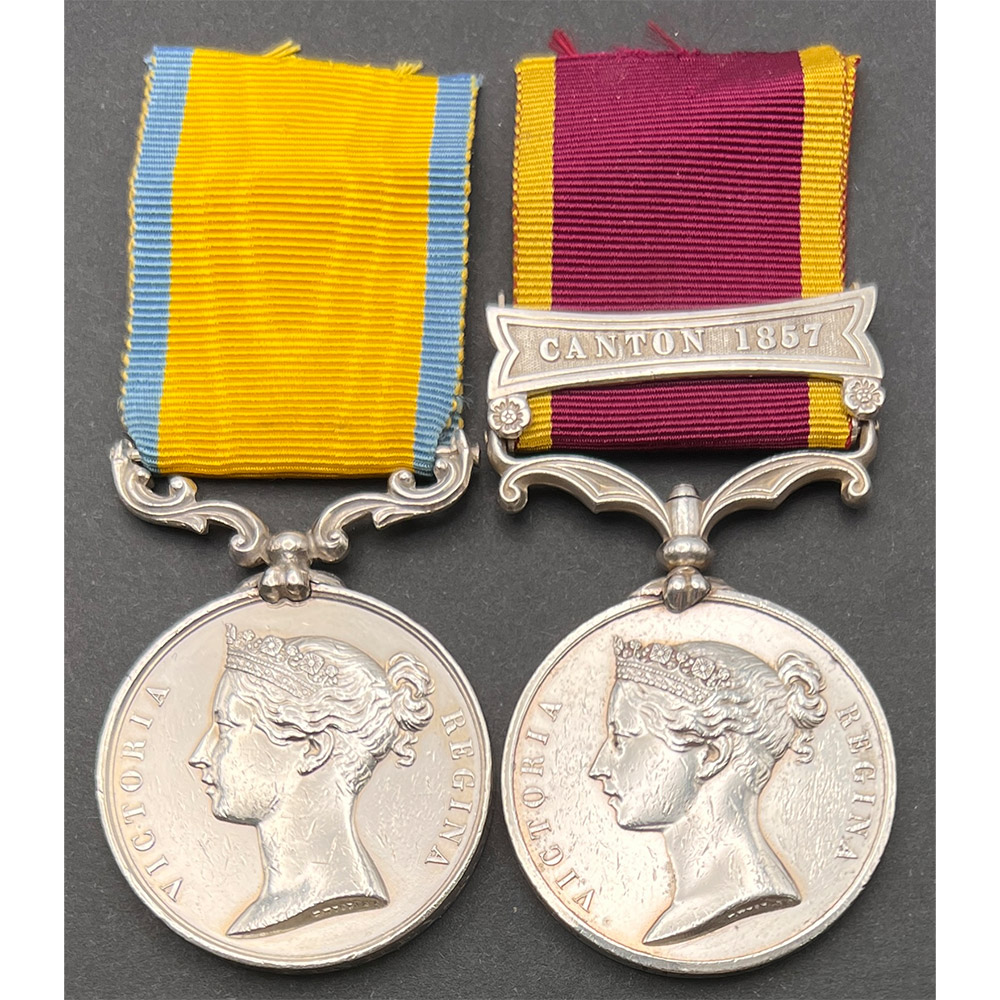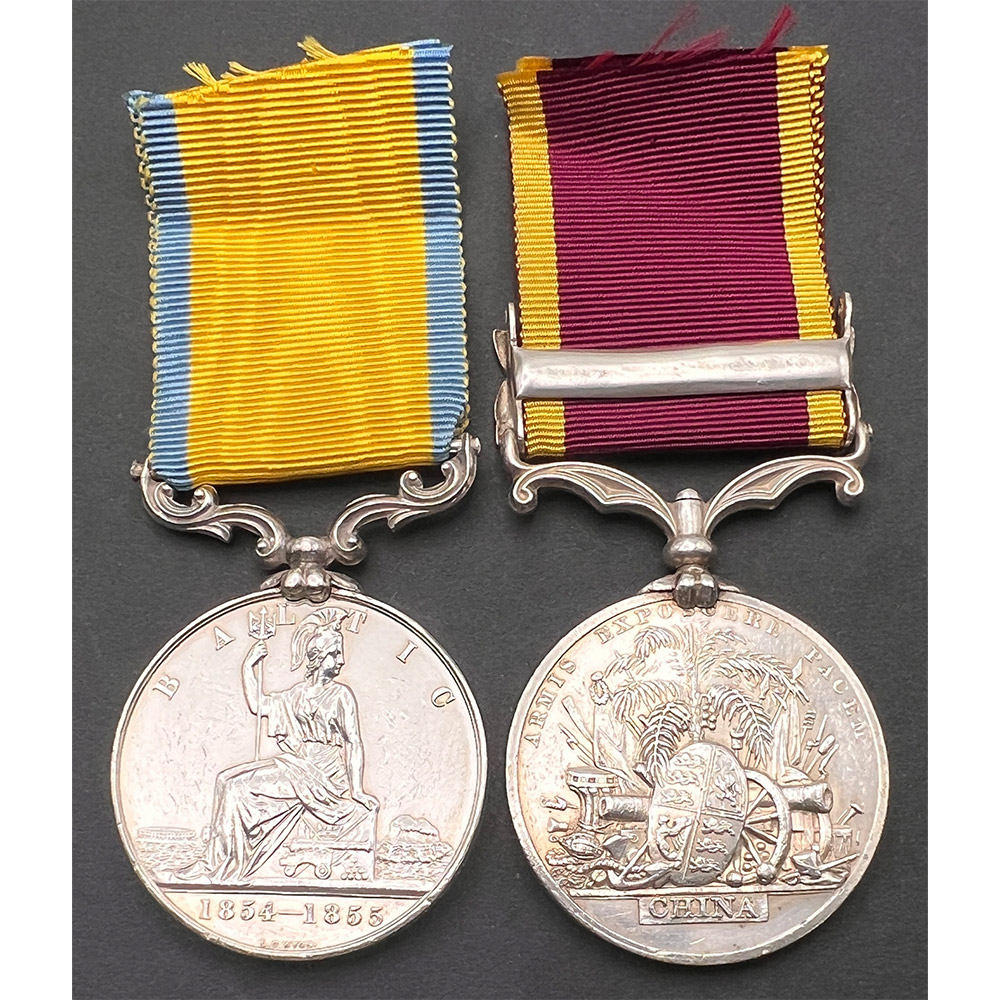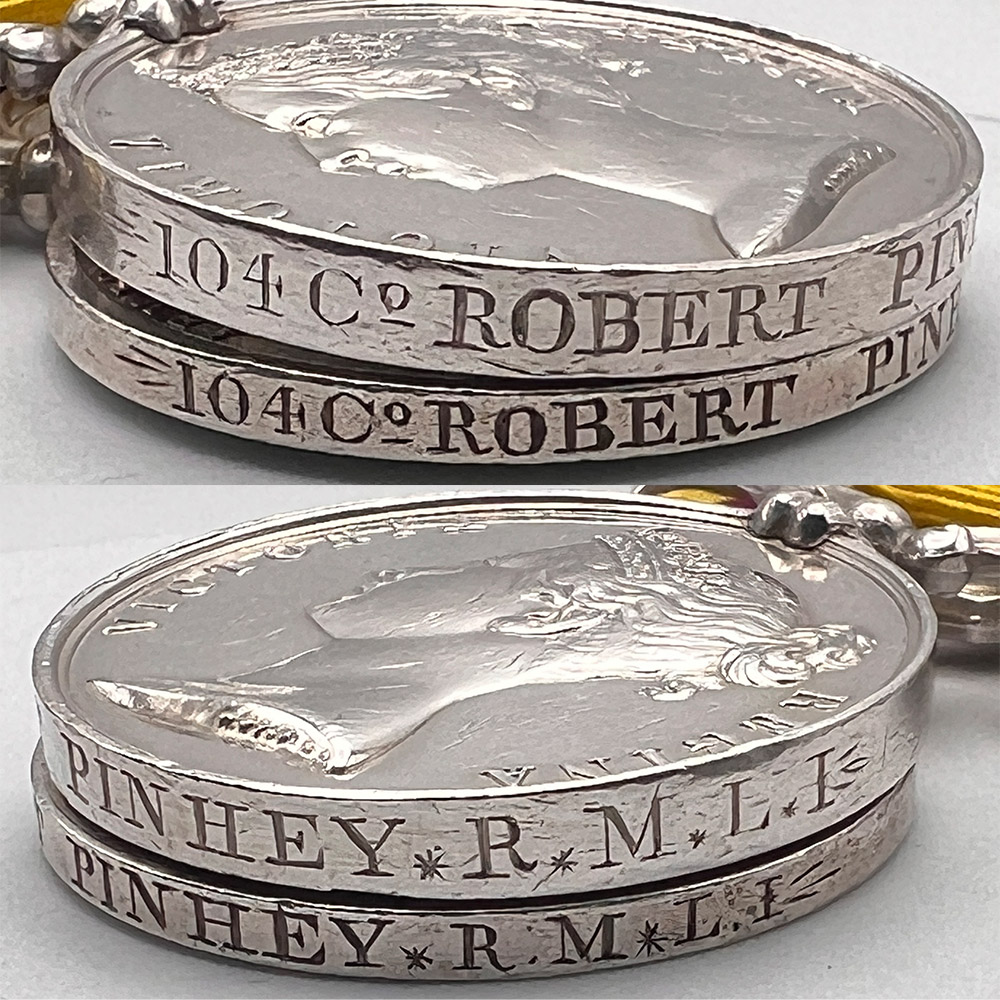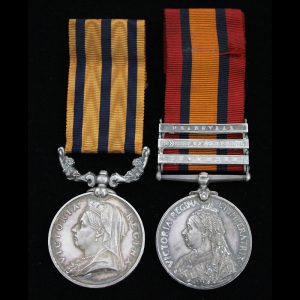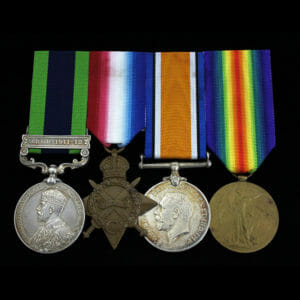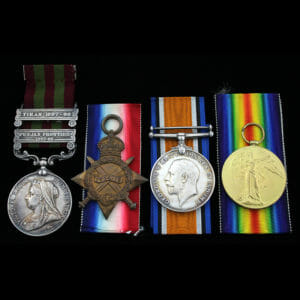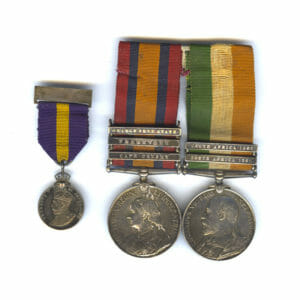Description
Baltic Medal 1854-55, 2nd China War Medal, bar Canton 1857, Private Robert Pinhay, 104th Company Royal Marines Light Infantry.
Baltic Medal contemporarily engraved, with little decorative flourished at beginning and end: “104 Co ROBERT PINHEY. R.M.L.I.” Baltic medal does not swivel, fixed suspension.
Confirmed on the medal roll, issued off the roll of his ship HMS Cornwallis, sent to him at the Headquarters in Plymouth 25th March 1857, right as he was about to set off to China.
China engraved in matching style: “104 Co ROBERT PINHEY. R.M.L.I.”
Confirmed on the medal roll for the medal and clasp as part of the Royal Marine Brigade.
Provenance, Baltic Medal ex DNW September 1994, and China Ex DNW 2011, a nice case of a re-unite having been sold like this as a pair again in DNW during May 2017.
“His name does not appear in the Regimental Defaulters Book. He is in possession of 2 Good Conduct Badges. Served in the Baltic Campaign in 1855 and was present at the Bombardment of Sveaborg, Served in China from 1857 to 1860 and was present at the Capture of Canton. Has the Baltic Medal, also the China Medal with clasp for Canton 1857 for the above services.”
CHARACTER: “Exemplary”.
Mr Robert Pinhey, was born in the small town and parish of Dodbrooke in Kingsbride, Devon circa 1835.
He was actually baptised as “Robert Henry Ellis Pinhey” on 30th November 1833, his father’s first name was however left blank on the listing, and occupation reads: “Single Woman” So it appears his mother Mary was left alone with a baby.
Aged 18 year 7 months old, he attested for service with the Royal Marines on 1st July 1854.
He had been a member of the “Naval Coast Volunteers” and signed up for a considerable bounty of £3-17-6.
He stated that he had no prior service, but a hand written note seems to have tracked him down: “Subject to 14 days imprisonment if he is not attested and if he belongs to the Naval Coast Volunteers he is liable to six months of imprisonment.”
He went on to see 9 years 243 days of service with the Royal Marines.
Of which, 1 year 243 days were spent in the UK.
A considerable amount of that time was spent on active service in 2 wars:
HMS Cornwallis, from 15th Feb 1855 – 13th August 1856
HMS Clown 18th march 1857 – 16th September 1860.
HMS Royal Adelaide, 1st June 1860 – 31st Dec 1862
Following 8 years of Exemplary service he was: “Robert Pinhey, Private, Admiralty Order 15th Feb 1864 having been invalided at the Royal Naval Hospital Plymouth from Heart Disease, contracted subsequently to his entry into the service.”
At the time he was serving with 104th Company, R.M.L.I. which matches his medal naming from the period.
CHINA SERVICE
HMS Clown was part of the Clown Class of gunboats built in January 1856 intended to be used in the Crimea War. However by the time of completion the war was over, in 1857, Pte Pinhey joined the ship and was sent over to the Far East to fight in the Second Opium War.
These unusual little gunboats were commissioned as independent commands with a crew of 36 men and officers. She first arrived at Hong Kong under Lt W. Lee from Plymouth, on 13th November 1857.
Pte Pinhey would see 3 years 184 days service between Hong Kong and the Canton River, fighting in the China War.
Soon after the war, prize money was distributed, a large percentage going to the Niger Clown and Janus: “Bounty for the Destruction of Pirates by HMS Niger, Clown and Janus, £1401.
The Clown was part of a Gunboat Squadron under the Command of Captain J.J. M’Cleverty CB.
